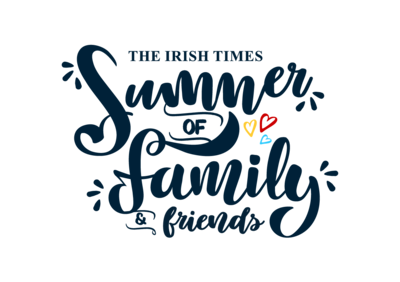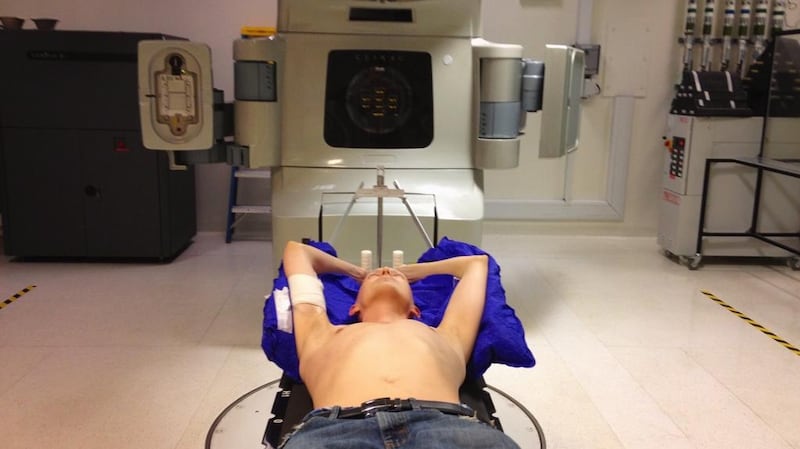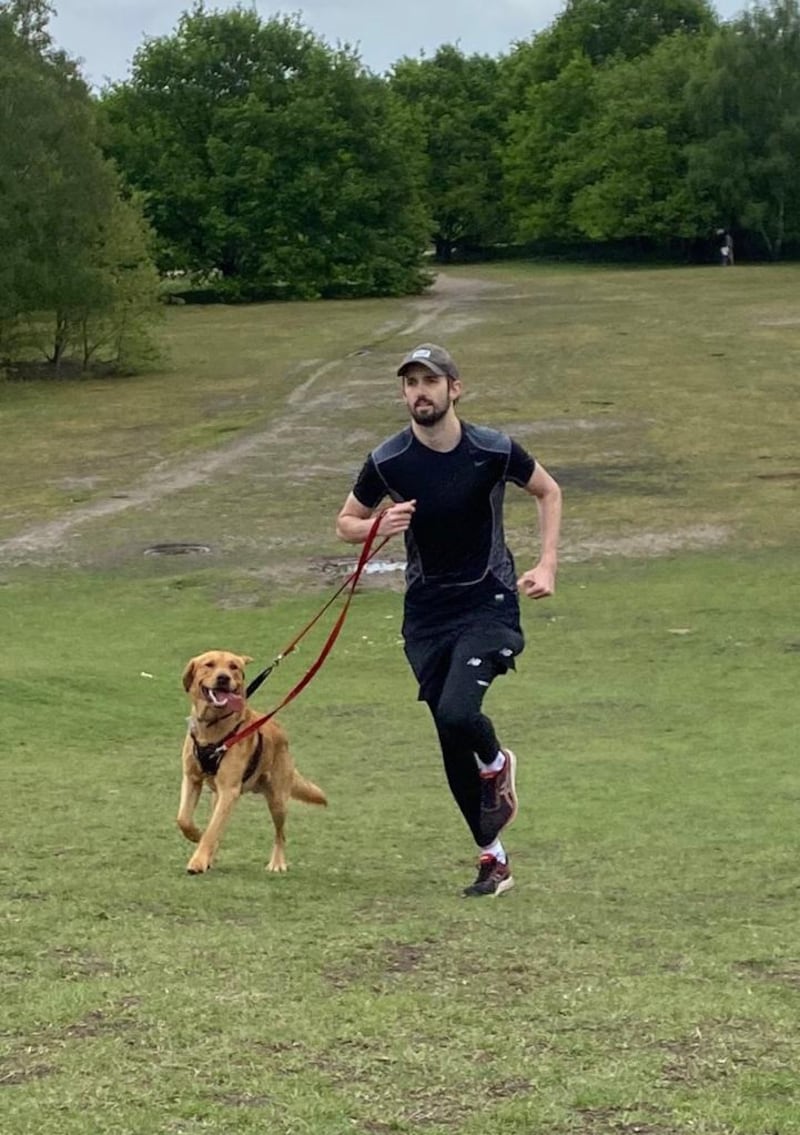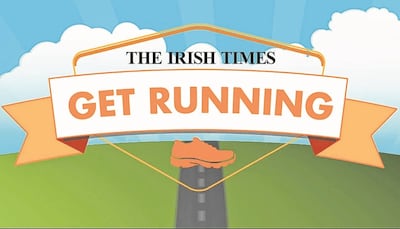If truth be told, running a marathon had never been one of my main priorities in life. But the seed was planted when I was told during treatment for a rare form of cancer, called Ewing’s sarcoma, that I might never be able to run one.

I was sitting in my radiotherapist's office in University College London Hospital (UCLH) in October, 2016. I had just finished six rounds of VIDE chemotherapy to shrink a giant tumour in my chest. The bone cancer had been growing in my rib and I was about to be treated with six weeks of radiation therapy, five days per week.
Dr Franel Le Grange, my South African-born clinical oncologist, began talking me through what was to come and what I could expect. She said they were going to target the right side of my chest, primarily hitting the tumour but also my right lung as an unintended consequence. A Ewing's tumour is very sensitive to radiation, with one specialist noting that it often "melts like ice" under the barrage of high-energy beams.
I asked Dr Le Grange if I'd ever be able to run a marathon in my lifetime once treatment was finished.
“It’s going to be very difficult for you,” she said, turning to me, swivelling slowly in her chair. I remember feeling at a sudden loss. I understood her implication that it might be impossible for me or even unsafe, depending on what kind of shape I was in once my treatment had finished. But I also wanted to fight back and resist any physical limitations.
Before radiotherapy could start, my radiation team took careful measurements with imaging tests to determine the correct angles for aiming the beams and the proper dose of radiation. I had to lie on a table, with my arms outstretched as far back behind my head as they could go, for 20 acutely uncomfortable minutes, during which time they placed small permanent tattoo marks on my chest. This allowed them to align the machine seamlessly every day.
My arms slowly got used to it. Beams of radiation silently blasted the tumour and, as I would later learn, a good portion of my right lung.

"You'll sail through it," a member of my NHS team had said, and I did get through this phase rather easily. There was a small build-up of fatigue and the occasional tedium of waiting two hours for my daily 15-minute session. My parents were staying nearby in Russell Square and my mother would walk to the hospital on Euston Road to keep me company. Towards the end, peach fuzz was beginning to grow back on top of my head and my eyebrows, which had fallen out completely during chemo, were coming back. I felt no immediate side-effects.
The tough work was only about to begin. The radiotherapy had acted as a literal slow burn to my chest and its effects began to be felt strongly a month after treatment ended. I developed a severe cough and fatigue that would last weeks, all through Christmas 2016. My right lung had taken a battering.
I was due to have surgery at the Royal Brompton Hospital in Chelsea to remove my tumour on February 1st, 2017, and my mother had flown over from the West of Ireland. But at the last minute, on the morning of surgery, with me hospitalised, gowned, prepped and ready to go, they cancelled it. My lung was very angry and not in good shape.
March 1st, 2017, arrived and became a fateful day in my life, one which I now celebrate annually as my re-birthday
Crushing disappointment doesn’t begin to describe our reaction but safety came first and they deemed an operation at that point to be too big a risk to my life.
They said they would try again in four weeks.
Pneumonitis, an inflammation of the lungs, first had to be reduced and I was prescribed a month-long course of very strong steroids. It was later revealed to me that I very likely had walking pneumonia over the winter period.
March 1st, 2017, arrived and became a fateful day in my life, one which I now celebrate annually as my re-birthday. My surgeon, Mr Simon Jordan, removed parts of four ribs and the rest of the tumour. Mr Stuart James, clinical lead for plastic surgery at the Royal Marsden, next door to the Brompton, then got to work. He moved my Latissimus Dorsi flap (the LD flap is used in reconstructive surgery) from my back, pushed it up under my shoulder and over my pectoral to cover a mesh prosthesis inserted into my chest. The doctors even used a bit of cement when inserting the prosthesis to replace the gap in my ribs, a detail that amazed us at the time.
Mr Jordan told my mother in the high dependency unit that they had considered postponing the surgery a second time, for another month, but I was still gaga from the anaesthetic and didn’t hear that.
My surgery was a complete success and in 2019, after a long, painful recovery, I wanted to attempt that which my medical team believed would be improbable for me. I was going to train for a marathon.
First, I needed a spot. This year marks the 40th anniversary of the London Marathon and it was meant to be a spectacular year. More than 450,000 people were applying for roughly 45,000 places and I knew I needed a way in.

Throughout 2019, I acted as a network leader in London for Shine Cancer Support, a UK charity that assists younger adults in their 20s, 30s and 40s living with cancer and their plus ones. Ceinwen Giles, a Shine director, told me they wouldn't have a marathon spot for 2020 so I looked elsewhere. After sending out many applications with my medical history and a pledge to raise money for them, I had offers from Bone Cancer Research Trust, CLIC Sargent, Sarcoma UK and Cancer Research UK – all vital charities but not ones that had meant as much to me personally as Shine.
As luck would have it, towards the end of the summer of 2019, Shine reached out to me. They had unexpectedly been allotted one spot in this year's race. They offered it to me and now I had the charity I wanted to run for, one that had been such a benefit to my mental health during recovery. (As a charity marathon runner, I've committed to raising £3,000 for Shine Cancer Support UK and have raised £1,734 so far. To donate, see justgiving.com/fundraising/conor-lane).
By January, 2020, I was deep in hard training. There was much I had learned about my new body post-cancer. Breathing is more difficult now because the prosthesis in my chest greatly reduces the flexibility of my right side to expand.
Amazingly, my body has accommodated the prosthesis very well and I have had no infections from it. This was a serious consideration in my first year after treatment and an issue that one member of my Brompton team, Mr Silviu Buderi from Romania, was worried about post-surgery because, as he said, if the prosthesis got infected, they would have to go in and operate again.
Anyone who has had the shock of a cancer diagnosis knows that life can change in a minute.
But the prosthesis does restrict the amount of air I can inhale. Add to that scar tissue on my right lung from radiation and my lung simply doesn’t work as efficiently as it used to.
I attended a free "Meet the Experts" event at Central Hall Westminster hosted by marathon director Hugh Brashner. He introduced elite coach Martin Yelling, who offered the audience something I had not yet thought to follow, a rigorous and structured 16-week plan. For novices, it involved three runs a week, two short and one long, that would increase incrementally each week. I now had my plan.
By early March of this year, I was able to run 21km (about 13 miles) and running was part of my life. But on March 7th, the Barcelona Marathon was postponed and I texted my girlfriend, Helena McNish, to say that it seemed only a matter of time before London's was going to be rescheduled, too. Helena was intending to run the Hackney Half Marathon and we had been training together at the weekends.
Then, on March 13th, I awoke to news saying the Boston Marathon had been postponed. Hours later, the London Marathon, which had been due to take place on April 26th, followed suit, moving to October 4th.
All these decisions were the right ones to take, given the circumstances, but it was still difficult not to feel a bit lost as all normal life and my focus on training and running ground to a halt. As an individual more at risk of lung complications than the average person, now I had the threat of a novel coronavirus.
I was due to have a routine chest X-ray on April 17th. Speaking with my team, we all agreed it was safer to wait until July before I next go into hospital. Anne McTiernan, clinical nurse specialist at UCLH, phoned me for a check-up instead. She said they had debated whether to send me a letter that would have placed me in the high-risk group. This letter recommended that some people live in total isolation for 12 weeks.
Anne explained that there were reasons for and against it. She described my situation as follows: “Are you more at risk of contracting coronavirus? No. Are you at more risk of your lungs becoming inflamed by the virus? No. But if your lungs were to become inflamed, given your treatment history, then yes, you are more likely to suffer with it.”
On the other hand, despite significant damage to my lung, she said the training I had been doing over a number of months and decreased notable chest infections were a good sign that my immune system is working well. Had I asked to have been placed in the high-risk group, the team was willing to say I could be but there was no advantage in it for me.
I’m fortunate to have been living in London when I was diagnosed because my care was superb. I’m equally fortunate to live here now, near my NHS team, in case Covid-19 were to hospitalise me.
Anyone who has had the shock of a cancer diagnosis knows that life can change in a minute. And now it has changed for the entire world. Anyone whose life has been saved by the NHS, as mine was, understands the crucial importance of protecting the healthcare system.
So the marathon can wait, and whether it goes ahead on October 4th or in 2021, I’m determined to run my race and cross the finish line.

Sign up for one of The Irish Times' Get Running programmes (it is free!).
First, pick the eight-week programme that suits you.
- Beginner Course: A course to take you from inactivity to running for 30 minutes.
- Stay On Track: For those who can squeeze in a run a few times a week.
- 10km Course: Designed for those who want to move up to the 10km mark.
Best of luck!












